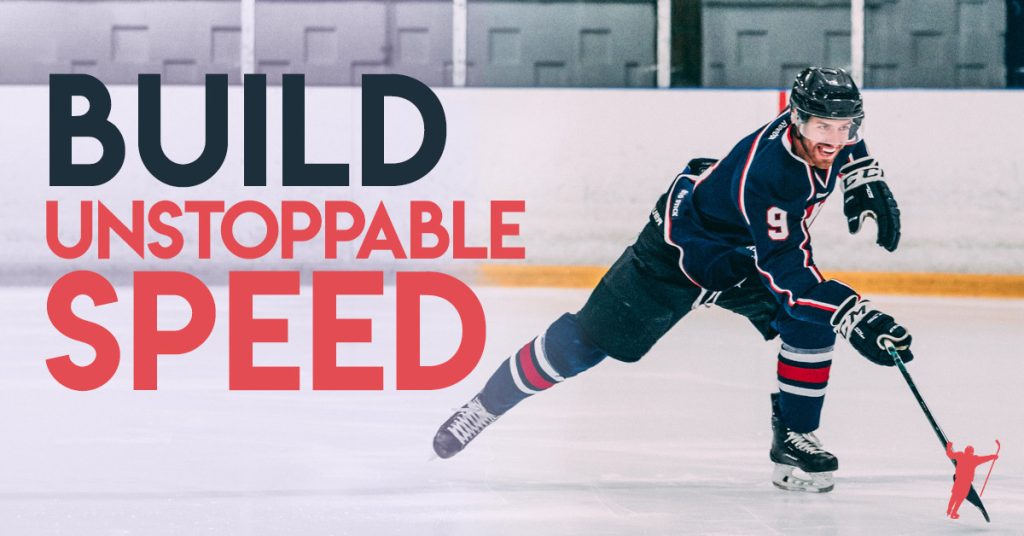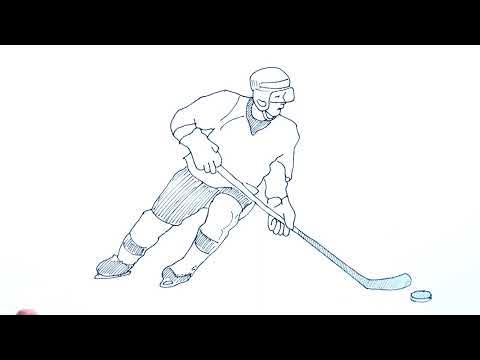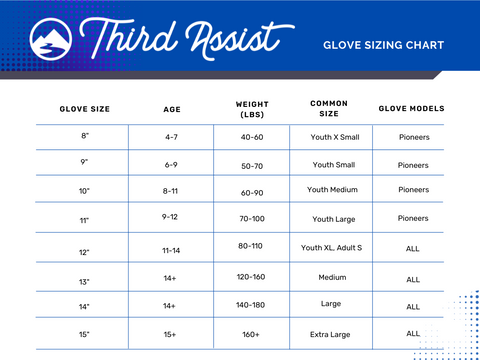Want to boost your speed on the ice? You’re in the right place.
Speed is crucial in ice hockey, and improving it can change your game. Getting faster in ice hockey involves technique, strength, and practice. Whether you’re a beginner or a seasoned player, speed can give you an edge. Imagine skating past defenders with ease, reaching the puck first, and making quick plays.
Speed isn’t just about legs; it’s also about agility and quick thinking. In this guide, we’ll dive into tips and exercises to help you become faster. From on-ice drills to off-ice workouts, we’ll cover it all. Ready to up your game? Let’s get started on the path to becoming a faster ice hockey player.
Importance Of Speed In Ice Hockey
Speed plays a crucial role in ice hockey. It often determines the game’s outcome. Faster players can control the puck better, evade defenders, and create scoring opportunities. Speed also improves overall team dynamics. Every second counts on the ice, making speed essential.
Impact On Performance
Speed directly affects a player’s performance. A fast player can reach the puck first, giving their team an advantage. Quick movements help in dodging opponents and maintaining puck possession. It also increases a player’s ability to make rapid decisions. Fast skating means faster reaction times, which is vital in high-pressure situations.
Competitive Edge
Having speed gives players a competitive edge. Coaches often favor faster players for key positions. Speed can turn a good player into a great one. It allows players to break away from defenders and create scoring chances. Teams with faster players usually dominate the game. They can maintain pressure on the opposition and keep the game pace high. This often leads to more goals and victories.
Strength Training
Strength training improves speed on the ice by building muscle strength. Stronger muscles increase power and agility. Regular training helps players react quickly and maintain balance.
Strength training plays a vital role in improving your speed in ice hockey. Building strength will help you skate faster, change direction quickly, and maintain balance. Let’s focus on two key areas: core exercises and leg workouts.Core Exercises
A strong core is essential for stability and power. Start with planks. Hold a plank position for 30 seconds. Gradually increase the time as you get stronger. Next, try Russian twists. Sit on the ground, lean back slightly, and twist your torso from side to side. Use a light weight for added resistance. Another effective exercise is the bicycle crunch. Lie on your back, lift your legs, and pedal like you’re riding a bike. Touch your elbow to the opposite knee with each pedal.Leg Workouts
Powerful legs are key to skating faster. Begin with squats. Stand with feet shoulder-width apart, lower your body, then rise back up. Aim for three sets of 10 reps. Lunges are also great. Step forward with one leg, lower your hips, then return to the starting position. Switch legs and repeat. Incorporate calf raises into your routine. Stand on your toes, then lower your heels. Do three sets of 15 reps. By focusing on these exercises, you will build the strength needed for faster skating.Plyometric Drills
Plyometric drills are perfect for increasing speed in ice hockey. These exercises focus on rapid, explosive movements. They help develop muscle power and improve agility. Plyometric drills can make you quicker on the ice. Here are some effective plyometric drills to get faster in ice hockey.
Explosive Movements
Explosive movements are key for improving speed and power. These exercises involve fast, powerful actions. They help train your muscles to react quickly.
Box jumps are a great example. Jump onto a box, then step down. Repeat this movement to build strength and speed.
Another excellent exercise is the standing broad jump. From a standing position, jump forward as far as possible. This helps improve leg power and speed.
| Exercise | Description |
|---|---|
| Box Jumps | Jump onto a box and step down. |
| Standing Broad Jump | Jump forward from a standing position. |
Jump Training
Jump training is essential for speed and agility in ice hockey. It helps develop explosive leg power. This makes you faster on the ice.
Tuck jumps are a great exercise. Jump up and bring your knees to your chest. Repeat this movement for several reps.
You can also try lateral jumps. Jump side to side over an object. This improves lateral quickness and balance.
- Tuck Jumps: Jump up and tuck knees to chest.
- Lateral Jumps: Jump side to side over an object.

Credit: www.youtube.com
On-ice Speed Drills
Ice hockey demands not just skill but also speed. To get faster on the ice, incorporating on-ice speed drills into your training routine is crucial. These drills enhance your skating speed, agility, and overall performance. Let’s dive into some effective on-ice speed drills that can help you improve your game.
Sprints And Intervals
Sprints and intervals are excellent for building explosive speed. Here’s a simple drill:
- Start at one end of the rink.
- Sprint to the opposite end as fast as you can.
- Rest for 30 seconds.
- Repeat for 10 sets.
This drill mimics game conditions where quick bursts of speed are essential. It also improves your recovery time between sprints.
Edge Work
Edge work is vital for better control and speed. To practice edge work:
- Focus on using the inside and outside edges of your skates.
- Perform tight turns and crossovers.
- Practice figure eights, emphasizing smooth transitions.
Working on your edges helps with balance and agility, making your skating more efficient.
Incorporate these drills into your routine to become a faster, more agile hockey player. Consistency and practice are key.
Skating Technique
Improving your skating technique is crucial for getting faster in ice hockey. Better technique means more speed, balance, and control. Focus on key aspects of your skating to boost performance. Here, we break down the essentials of skating technique.
Stride Efficiency
Effective strides are the foundation of speed. To achieve stride efficiency, consider the following:
- Push-off: Use the entire blade, not just the toes.
- Recovery: Bring your leg back quickly and smoothly.
- Length: Aim for long, powerful strides.
Proper technique minimizes wasted energy and maximizes speed. Practice consistently to see improvements.
Body Position
Maintaining the right body position enhances balance and power. Key elements include:
- Knees Bent: Keep your knees bent at all times.
- Low Center of Gravity: This helps with stability and control.
- Forward Lean: Lean slightly forward to optimize your momentum.
Incorrect body position can slow you down. Focus on these elements to stay quick and agile on the ice.
Flexibility And Mobility
Flexibility and mobility are key components in improving your speed in ice hockey. A flexible body can move more freely and efficiently on the ice. This can help you skate faster, turn quicker, and reduce the risk of injury. In this section, we will explore two important aspects of flexibility and mobility: dynamic stretching and range of motion.
Dynamic Stretching
Dynamic stretching involves moving parts of your body and gradually increasing reach and speed. This type of stretching warms up your muscles, preparing them for the demands of ice hockey. Here are some effective dynamic stretches:
- Leg Swings: Stand on one leg and swing the other leg forward and backward. This helps to loosen up your hip flexors.
- Arm Circles: Extend your arms and make small circles, gradually increasing the size. This warms up your shoulders.
- Torso Twists: Stand with your feet shoulder-width apart and twist your torso from side to side. This increases mobility in your lower back.
Perform these stretches for 5-10 minutes before practice or a game. Dynamic stretching enhances blood flow and muscle temperature, which improves performance.
Range Of Motion
Range of motion (ROM) is the distance and direction a joint can move. Increasing your ROM can improve your skating speed and agility. Here are some tips to enhance your ROM:
- Foam Rolling: Use a foam roller to massage tight muscles. This can increase flexibility and reduce muscle stiffness.
- Yoga: Incorporate yoga poses that focus on hip and shoulder mobility. Poses like the pigeon stretch can be very effective.
- Joint Rotations: Rotate your joints in a controlled manner. This includes your ankles, knees, hips, and shoulders.
Increasing your ROM involves consistent practice. You might not see immediate results, but over time, your mobility will improve.
| Exercise | Target Area | Benefits |
|---|---|---|
| Leg Swings | Hips | Increases hip flexor flexibility |
| Arm Circles | Shoulders | Warms up shoulder muscles |
| Torso Twists | Lower Back | Improves lower back mobility |
| Foam Rolling | Various | Reduces muscle stiffness |
| Yoga | Hips and Shoulders | Enhances overall flexibility |
By focusing on dynamic stretching and improving your range of motion, you can enhance your flexibility and mobility. This will contribute to faster and more efficient skating on the ice.
Nutrition For Speed
Getting faster in ice hockey requires more than just physical training. It also demands proper nutrition. The food you consume can directly impact your speed. Eating the right nutrients ensures your body has the fuel it needs to perform at its peak.
Energy-rich Foods
To skate faster, you need energy. Foods rich in carbohydrates are essential. They provide the fuel your muscles need. Consider the following:
- Whole grains: Brown rice, oatmeal, and quinoa.
- Fruits: Bananas, apples, and berries.
- Vegetables: Sweet potatoes, carrots, and spinach.
Protein is also crucial. It helps repair and build muscle. Include these in your diet:
- Lean meats: Chicken, turkey, and lean beef.
- Fish: Salmon, tuna, and mackerel.
- Plant-based: Beans, lentils, and tofu.
Hydration
Staying hydrated is vital for speed. Dehydration can slow you down. Water is the best option. It keeps your body functioning properly. But consider these tips:
- Drink water throughout the day. Don’t wait until you’re thirsty.
- During training, take small sips regularly.
- Avoid sugary drinks. They can cause energy crashes.
Electrolyte drinks can help during intense workouts. They replenish the salts lost through sweat. Look for drinks with low sugar content.
Proper nutrition supports your training efforts. It can make a significant difference in your speed on the ice. Focus on consuming energy-rich foods and staying hydrated. Your body will thank you.

Credit: next-level-athletics.com
Mental Preparation
Mental preparation is key to becoming faster in ice hockey. Physical training alone is not enough. Sharpening your mind can make a huge difference. Mental skills like focus, visualization, and confidence building are crucial.
Focus And Visualization
Focus is vital in ice hockey. It helps you stay aware of your surroundings. Concentrate on the puck and your movements. Visualization can improve your focus. Imagine yourself skating fast and making quick turns. Picture each move in your mind. This mental practice can enhance your physical performance. Visualize success before stepping on the ice. See yourself executing perfect plays. This builds muscle memory and sharpens your instincts.
Confidence Building
Confidence is essential for speed on the ice. Believe in your abilities. Trust that you can skate fast and handle the puck. Confidence comes from practice and positive self-talk. Encourage yourself during training. Replace negative thoughts with positive affirmations. Celebrate small victories to boost your morale. Feeling confident makes you more aggressive and assertive. This helps you take risks and push your limits. Confidence also reduces hesitation, allowing you to move faster.

Credit: next-level-athletics.com
Frequently Asked Questions
How Can I Improve My Skating Speed?
Improving skating speed requires strength training, proper technique, and regular practice. Focus on leg exercises and drills.
What Exercises Help With Faster Skating?
Plyometrics, squats, and lunges help increase leg strength and power, enhancing skating speed.
Does Proper Nutrition Affect My Speed?
Yes, proper nutrition fuels your body, aids recovery, and helps maintain peak performance for faster skating.
How Often Should I Practice To Get Faster?
Practice at least 3-4 times a week. Consistency is key to improving speed and technique.
Conclusion
Improving ice hockey speed takes practice and dedication. Focus on strength training. Work on your skating techniques. Maintain a healthy diet for better performance. Consistent effort leads to progress. Celebrate small victories along the way. Stay motivated and keep pushing yourself.
Remember, every step counts. Enjoy the journey of becoming faster.



